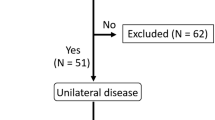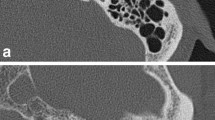Summary
The Viennese Medical School played an important role in the development of radiological examinations and signs of the temporal bone with conventional X-rays. Famous pioneers include E. G. Mayer (1893–1969) and L. Psenner (1910–1986). Nowadays conventional X-rays and tomography have lost their important role in diagnostic radiology of the temporal bone, but the basic principles established in those early years of radiology are still used now. This statement is correct not only for conventional X-rays, but particularly for “poly”-tomography in comparison with CT.
Zusammenfassung
Die Wiener Medizinische Schule spielte auch in der wissenschaftlichen Entwicklung der Radiologie eine herausragende Rolle. Radiologische Basissymptome und spezielle Aufnahmetechniken wurden an den Wiener Univ. Kliniken erstmals beschrieben bzw. entwickelt. „Motoren“ dieser Entwicklung waren E. G. Mayer (1893–1969) und L. Psenner (1910–1986). Heute haben konventionelle Schläfenbeinübersichtsaufnahmen und Tomographie ihre diagnostische Bedeutung weitgehend verloren, aber ihre zugrundeliegenden Basissymptome sind auch in den modernen bildgebenden Verfahren enthalten.
Similar content being viewed by others
Author information
Authors and Affiliations
Rights and permissions
About this article
Cite this article
Canigiani, G. Conventional diagnostic imaging of the temporal bone. A historical review. Radiologe 37, 925–932 (1997). https://doi.org/10.1007/s001170050304
Issue Date:
DOI: https://doi.org/10.1007/s001170050304




